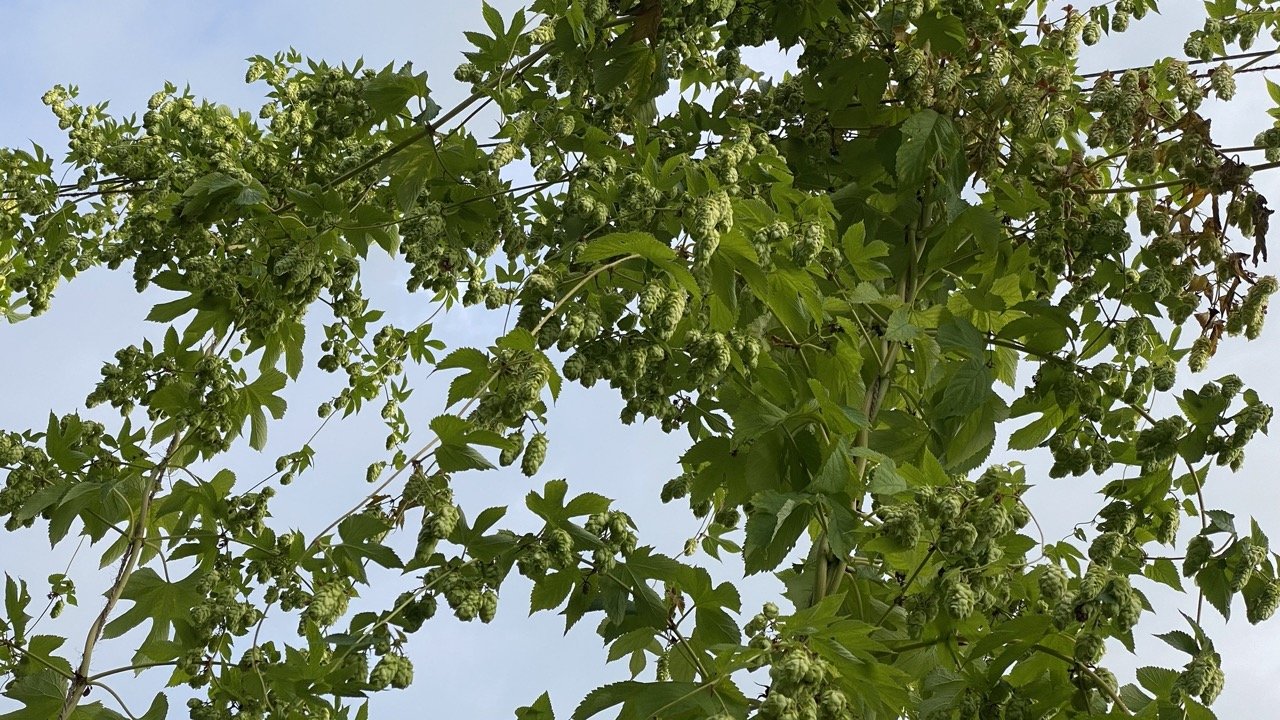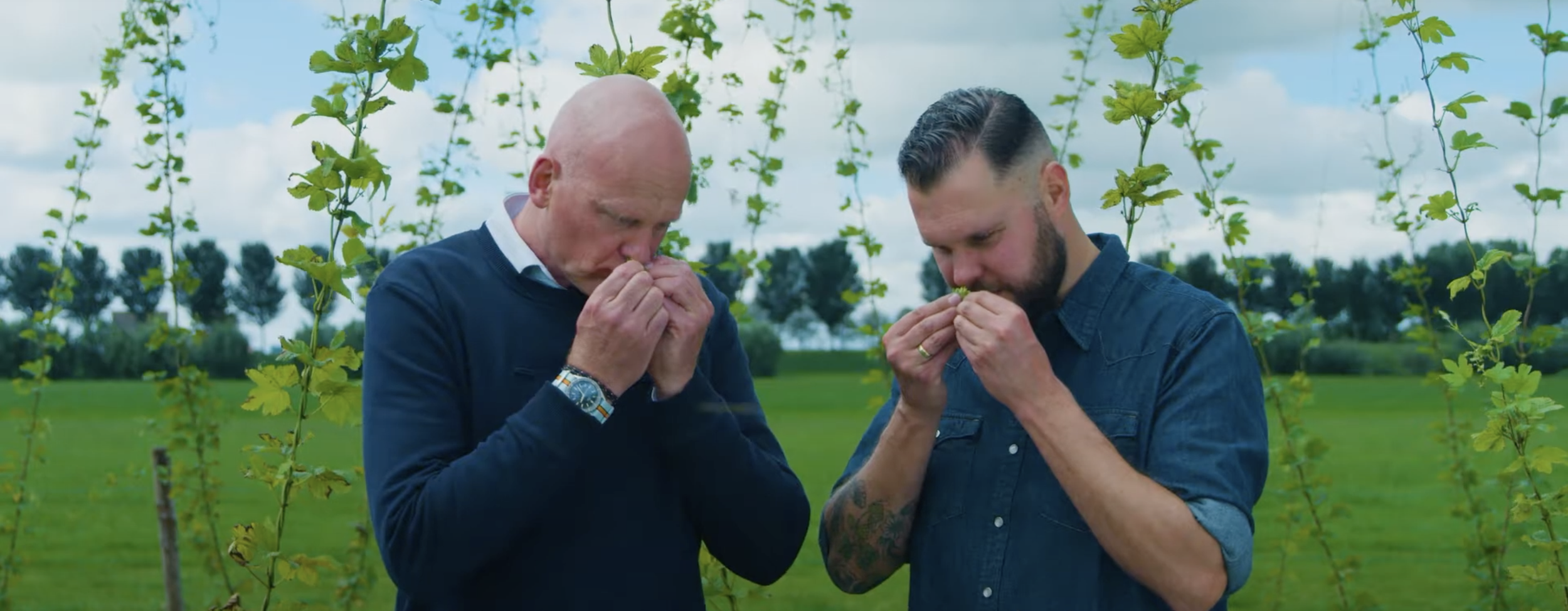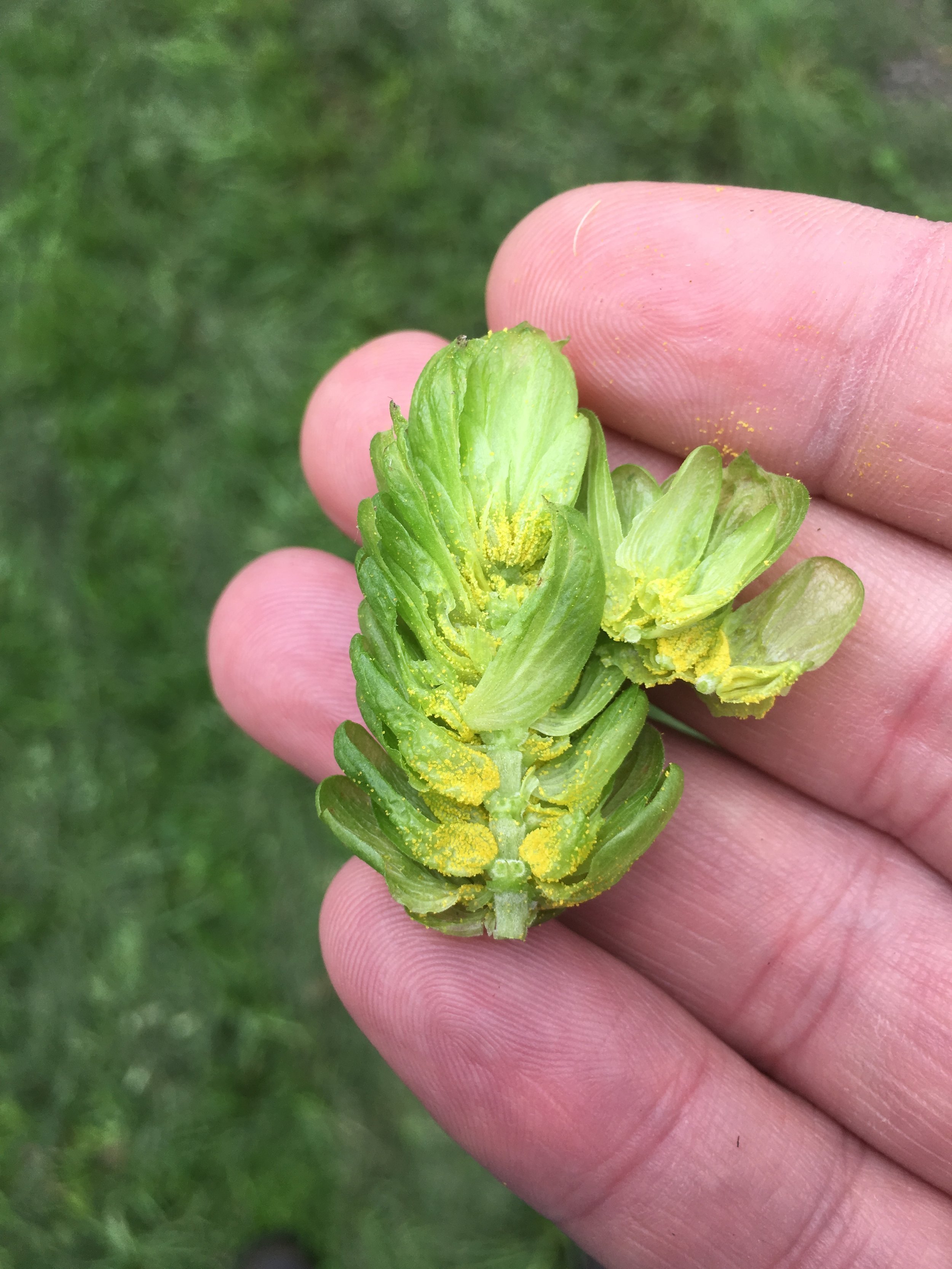Aroma Hop
What is aroma hop and how do you use it? We explain it and reveal our top 5 European hops that are perfect for adding a beautiful hop aroma to beer.
Cascade hops are a well-known aroma hop, this is Cascade right before harvest in Kent, England.
What is Aroma hop?
There are different ways of categorising hops, one of the oldest classifications is aroma hops - bitter hops - dual-purpose hops:
Aroma hops aim to bring for example fruity, spicy or floral hop aromas to beer. These are hop varieties that provide interesting aromas because of the essential oils they contain.
Bitter hops have a high level of alpha acid, so you need relatively less of them to give beer its distinctive hop bitterness.
Dual-purpose hops have them both, the essential oils and a high percentage of alpha acid.
Some hops developed because of their high alpha acids percentage - and seen as bitter hops - can have a surprisingly pleasant aroma. This is why we have chosen to categorise them by aroma profile and percentage alpha acid. If you are looking for a hop for aroma, then look for the desired aroma in the aroma profiles.
Carel (left) and Nathan from Hollands Hophuis are testing the German aroma hop Callista.
Our top 5 Aroma Hops
Although we do not follow the classic classification, we obviously have plenty of Aroma Bombs. This is our Top 5 hops -in no particular order- to add a wonderful hop aroma to your beer!
A hop variety developed with several goals in mind: a fruity aroma, reasonable in alpha acid and resistant to disease and more extreme weather conditions. That all worked out well, if we only look at the aroma especially. Full on Citrus aromas like grapefruit, lime and lemon, with a tropical-floral touch. Also known as Styrian Dragon. Perfect hops for a modern IPA.
A very fruity hop variety from Germany. Callista was developed to meet the rising demand for fruity hops. The aroma profile is Stone Fruit, which came out very well in Hello my name is Callista. Prominent aromas of apricot and peach, supported by aromas of grapefruit and berries. Gives a unique aroma to beers in which a fruity flavour is desired.
Developed is Slovenia, therefore also known as Styrian Wolf. In the conventional classification, this is a straight-up dual-purpose hop: high in alpha and aromatic hop oil. Tropical hop with specific aromas of passion fruit, mango, banana and coconut, among others, lying on a bed of lemongrass. Great hop variety for a NEIPA (New England IPA) or Hazy IPA. With good reason co-responsible for the fruity aroma in the first beer in the Hop Trophy.
Fruity aroma hop, discovered by coincidence in Champagne-Ardenne, France. A Heritage Hop now grown in Germany. A hop variety with a tropical aroma of papaya, melon, cherry, lemon blossom and coconut, among others, which stood out immediately when it was discovered. Precisely the reason why it has been brought back to life at our German hop farm. Tropical and Melon are the dominant aromas in this hop with its special history.
If we think in the aroma hop-bitter hop format, this is an all-out aroma hop, as Kolibri -also known as Styrian Kolibri- is low in its alpha acid and has a unique aroma. This hop was developed in Slovenia from European and American varieties. The dominant aroma in this hop is Red Fruit, think blackcurrant and blueberry, supported with aromas like elderflower and pineapple.
Adding hop aroma to beer
As stated above, hops contain essential oils that provide hop aroma. We find these oils in in the lupulin, the golden-yellow kernels inside the hop cone. The brewer's skill is to get as many of these oils into the beer as possible to give aroma to the beer.
Heat dissolves the oils better in the wort, but boiling also causes a lot to evaporate. So short boiling is the way to go, 10 to 15 minutes at most to give hop aroma to the beer. For more hop aroma, the brewer must use other techniques.
Open hop cone with the lupulin clearly visible.
Hops in the Whirlpool
A good way to give a lot of aroma to beer is to add the hops only after boiling. In this way, many oils dissolve while few evaporate. Many breweries therefore add (a lot of) hops during the whirlpool, the moment right after boiling and just before the wort goes to the fermentation tank. In some cases, the brewer only adds hops from this moment and not at all before. This was the case with Van Moll Solaris, for example.
Hops in the Whirlpool at Van Moll while brewing Solaris.
Dry-hop
If you really want a lot of hop aroma in the beer, you can't escape dry-hopping: adding hops during fermentation and/or lagering. The hops are then soaked in the beer as a sort of tea, so that in a few days many aromatic oils are released from the hops into the beer. The best-known beer type where dry hopping is always used is the IPA, which contains a lot of hop aroma.
Want to discover our aroma hops? View our range categorised by aroma profile or take a look at the Hop Trophy, the beers brewed in this context always have a good aroma of hops from European soil.





